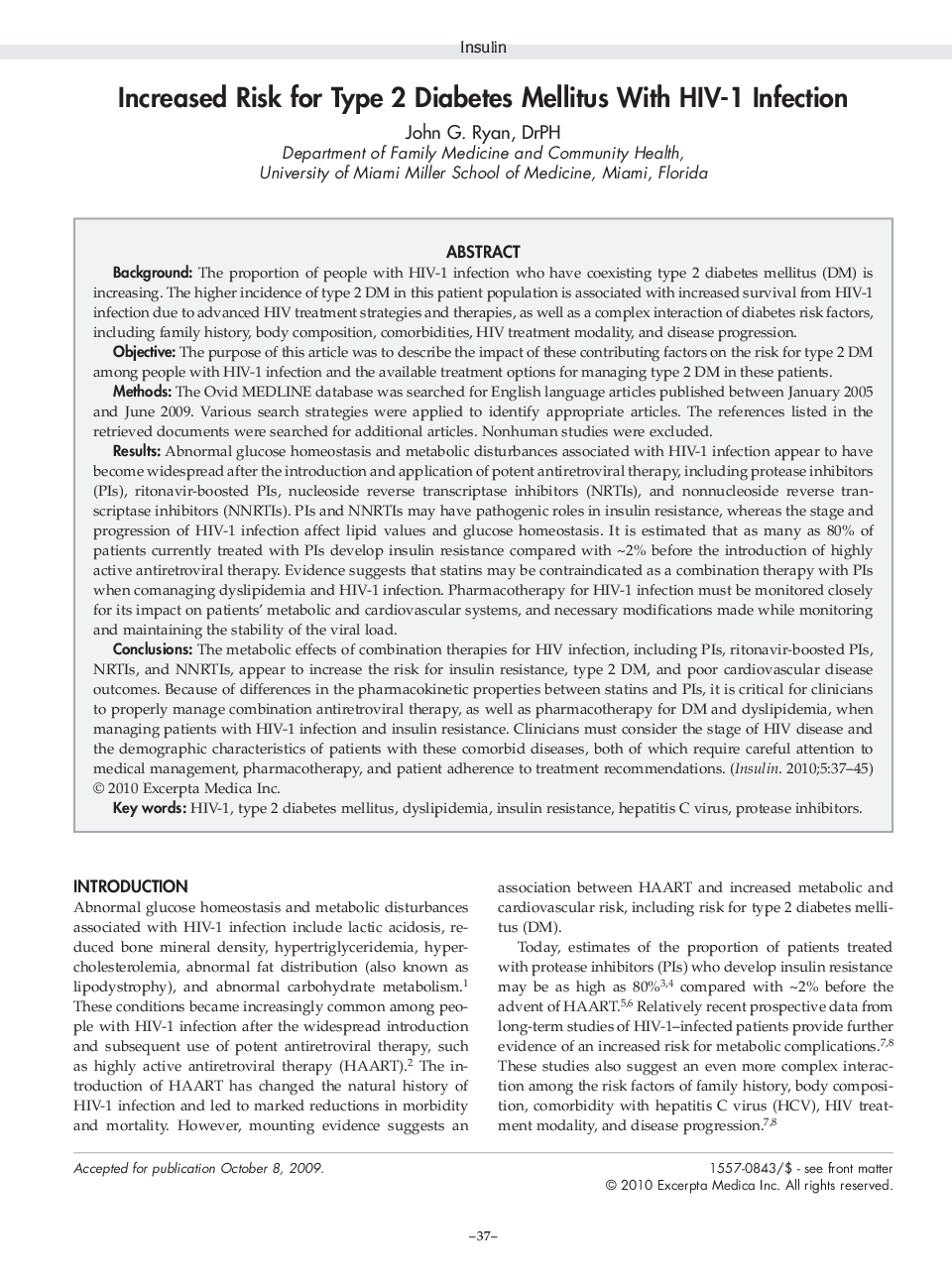| Article ID | Journal | Published Year | Pages | File Type |
|---|---|---|---|---|
| 2803709 | Insulin | 2010 | 9 Pages |
Background: The proportion of people with HIV-1 infection who have coexisting type 2 diabetes mellitus (DM) is increasing. The higher incidence of type 2 DM in this patient population is associated with increased survival from HIV-1 infection due to advanced HIV treatment strategies and therapies, as well as a complex interaction of diabetes risk factors, including family history, body composition, comorbidities, HIV treatment modality, and disease progression.Objective: The purpose of this article was to describe the impact of these contributing factors on the risk for type 2 DM among people with HIV-1 infection and the available treatment options for managing type 2 DM in these patients.Methods: The Ovid MEDLINE database was searched for English language articles published between January 2005 and June 2009. Various search strategies were applied to identify appropriate articles. The references listed in the retrieved documents were searched for additional articles. Nonhuman studies were excluded.Results: Abnormal glucose homeostasis and metabolic disturbances associated with HIV-1 infection appear to have become widespread after the introduction and application of potent antiretroviral therapy, including protease inhibitors (PIs), ritonavir-boosted PIs, nucleoside reverse transcriptase inhibitors (NRTIs), and nonnucleoside reverse transcriptase inhibitors (NNRTIs). PIs and NNRTIs may have pathogenic roles in insulin resistance, whereas the stage and progression of HIV-1 infection affect lipid values and glucose homeostasis. It is estimated that as many as 80% of patients currently treated with PIs develop insulin resistance compared with ~2% before the introduction of highly active antiretroviral therapy. Evidence suggests that statins may be contraindicated as a combination therapy with PIs when comanaging dyslipidemia and HIV-1 infection. Pharmacotherapy for HIV-1 infection must be monitored closely for its impact on patients' metabolic and cardiovascular systems, and necessary modifications made while monitoring and maintaining the stability of the viral load.Conclusions: The metabolic effects of combination therapies for HIV infection, including PIs, ritonavir-boosted PIs, NRTIs, and NNRTIs, appear to increase the risk for insulin resistance, type 2 DM, and poor cardiovascular disease outcomes. Because of differences in the pharmacokinetic properties between statins and PIs, it is critical for clinicians to properly manage combination antiretroviral therapy, as well as pharmacotherapy for DM and dyslipidemia, when managing patients with HIV-1 infection and insulin resistance. Clinicians must consider the stage of HIV disease and the demographic characteristics of patients with these comorbid diseases, both of which require careful attention to medical management, pharmacotherapy, and patient adherence to treatment recommendations.
